Right on the southern border of Switzerland (with Italy not very far away) lies the alpine resort of Zermatt which lies underneath the shadows of one of the most famous mountains in the world, the Matterhorn which looks like a wizard’s hat. I have come to this resort a few times in the last few years, not because of the tourist trap cable cars and shops but because I come for hiking and taking in all the nature and the surroundings. Zermatt is one of the prettiest resorts I have come across in the Swiss Alps, amongst its beauty there is so much to do and see.
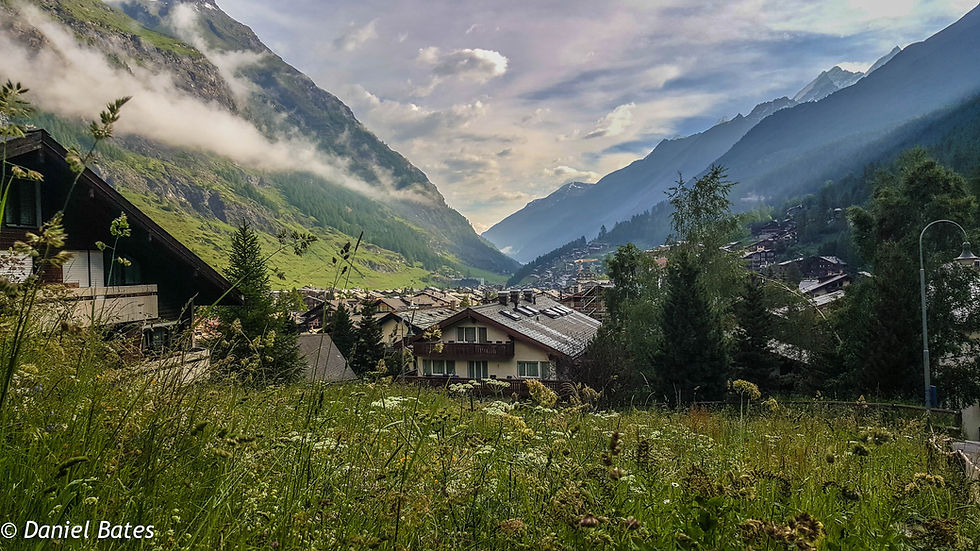
Not only the resort is surrounded by the Matterhorn but a whole ray of mountains which are over 4,000 meters high (13,000ft) which makes the setting for Zermatt a very special place. Combined with the ‘no motorised traffic’ allowed, the fresh alpine air has just got even fresher.
The resort is known for its skiing in the winter and hiking in the summer but for the lazy tourists there are a few things to do like to check out the Alpines Museum which documents the history of mountaineering in the region to take a train to the Gornergrat Mountain or the cable car to the Matterhorn Glacier Paradise (more about this later). However Zermatt is a great place to shop for expensive Swiss-made watches, cuckoo clocks and cow bells and has a variety of restaurants, cute bakeries and cafes.
My guide here is for those who do not ski and still are interested in visiting this beautiful resort. I have not included the ski resorts here (which host Europe’s highest) as I don’t ski.
How to get to Zermatt: With no cars or buses going to the resort (unless the owners of cars and trucks have a permit to drive to the resort otherwise all vehicles are electric in Zermatt), most people arrive in the area by train. The railway line goes from Visp-Brig and through the valley passing St Niklaus, Randa and Tasch before making the long climb to Zermatt. If visitors have a car, they can drive through the valley as far as Tasch then must park the vehicle in the huge car park in the station before taking the train to Zermatt. The train journey pass through amazing scenery and it doesn’t matter where you get on, the views out of the window are truly stunning all the way up to Zermatt (and back down of course).
Below: Photos of Zermatt during my winter visit
OK, let’s take the Gornergrat train: There is another train line which goes from Zermatt and climbs to one of the highest peaks in the area, the Gornergrat, which stands at 3,089m/10,138ft. The train has operated up this mountain since the late 1890s and climbs up 1,500 meters from Zermatt, stopping off at Riffelalp and Riffelberg on the way. The journey roughly takes about thirty minutes and is also known as Europe’s highest cogwheel railway. Once at the top, views of more than twenty four-thousand metre mountain peaks are to be had including the Matterhorn. There is also a hotel and a restaurant at the summit. This is definitely one of the most scenic train journeys in the world.
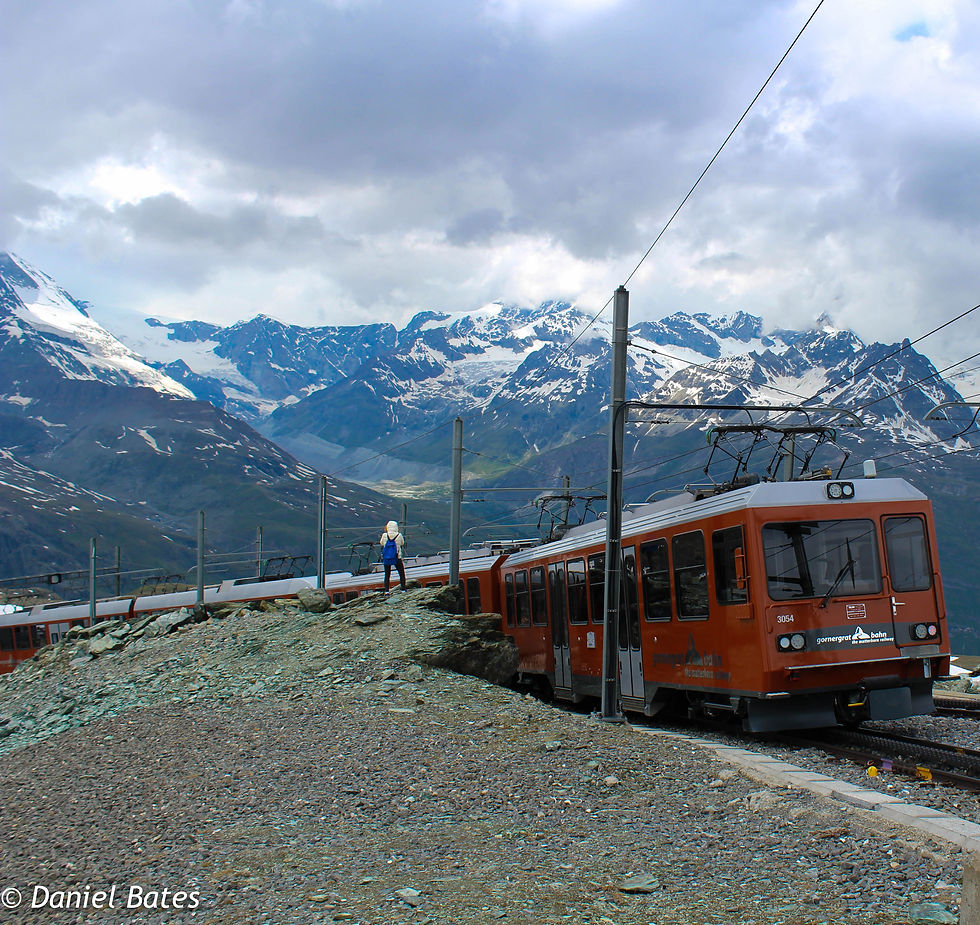
Matterhorn Glacier Paradise, Zermatt's number one attraction
One of the top things to do and see is to take a trip on the cable car to the Matterhorn Glacier Paradise whilst in Zermatt, Switzerland. It may cost an arm and leg to travel on but the views from the highest cable car station in Europe is to die for but it is just not the views to come and see, there are other things up there also. Let me tell you.
Early start needed: The best time to go is as early as possible. This is because there are less clouds and you are more likely to get a view of the most famous mountain in the area, the Matterhorn (the one which looks like a wizard’s hat) which is also known as Klein Matterhorn. In fact, so readers are not getting confused, Klein Matterhorn and the Matterhorn Glacier Paradise are exactly the same place. I always say start early especially in the summer months before the droves of tour companies bringing in hundreds of sightseers with their cameras. One tip, bring lots of cash for this attraction as I came away suffering from open wallet surgery, but the whole experience was definitely worth spending money on.

The Cable Car ride: The cable car station is easy to get to from anywhere in Zermatt, located at the southern side of the resort and it is signposted. The cable car ride and the buildings on route are wheelchair friendly and step-free access which is great, just don’t expect the mountains to be friendly mind you. The journey itself takes a while but the views are amazing, to which the Matterhorn is in view all the time and further up you go, there is more rocky treeless landscape to take in before the snowy peaks.
However the journey is done in two parts. The Matterhorn Express gondolas take visitors to Trockener Steg at 2939m. From here there is a connecting cable car (known as the Matterhorn Glacier Ride) which does the steepest part of the journey to the summit of Klein Matterhorn at 3883m (the highest cable car station in Europe). Here is where the snow peaks come into play and gets a little bit colder due to the thin air and elevation gained since traveling up from Zermatt (which is 1620m above sea level). I say the journey time including the waiting can be around, say, forty-five minutes to an hour going up and slightly quicker going down.
The cable car ride is open 365 days a year, so great for hikers and sightseeing in the summer months and skiers in the winter months. Just remember, there will always be snow on the peaks so remember to wear the right clothes and keep warm.

At the summit, now what? The way I do this trip is to let all the visitors from the cable car go to the viewing platform and I will head into the Glacier Paradise. Here I took a lift to go inside the mountain and walk down a tunnel into an ice cave full of amazing ice sculptures which are probably changed every year. It is colder here than outside so bring a jacket. The ice sculptures are located fifteen meters deep into the mountainside and are easily accessible, as there is a slope path or an elevator to take.
Now my top tip here, as already mentioned, take the right clothes. It can be colder here than outside on the peak of the mountain. Sensible footwear is needed but for the photographers out there, make sure the camera battery is fully charged. Using cameras in the cold drains the battery. Just in case, take some spare batteries also. Check out some of the amazing sculptures I saw in these photos.
Next to the viewing platform there is an exit to check out sporting activities and to see the border of Italy/Switzerland further down the slope. Even from here there is a cable car to take visitors to Italy but I haven’t done this. Inside the building there is a restaurant (buffet bar style) and a small cinema with all the history of the Matterhorn to check out.
The Viewing Platform: There is a lift to take visitors to the platform on top of the building (one wonders how the Swiss build these buildings on mountain summits and shove a cable car system into them). Visitors will get 360 degree views and when visiting on a clear day, the views are truly amazing. From here there are thirty-eight mountain peaks which are over 4000 meters above sea level and fourteen glaciers as well as taking in views of nearby France and Italy. If one is lucky, the Mediterranean Sea can be seen. I just about saw it as it is over 200 miles away. I simply took my time here to relax and enjoy these amazing views. One view I loved is looking down into the Zermatt valley; however the view of Matterhorn, which is still amazing, is not as great up here compared to, say, looking at it from Zermatt. It doesn’t look so much like a wizard's hat.
Whilst looking around, I could see the peak of Mont Blanc, the highest mountain in Western Europe which is located in France and the peaks of Jungfrau, Eiger and Mönch which are the highest peaks in Central Switzerland.
Other things to do: A list of other things to do (which I haven’t tried yet but we are hoping to do a third visit up here at some point in the near future with the children), there are two main hikes which can be done in the summer, one is the Breithorn ascent, which takes hikers up the Mount Breithorn, 4164 meters above sea level. The route is around 5.4km long and takes about three to four hours to complete as there is a lot of ascent and descent on the path. Just remember there will be snow on this mountain during the summer months and is not ideal for children. The other hike I will mention shortly.
There is a cinema lounge located in the Breithorn tunnel which has several cozy seats and shows a film of the area which lasts several minutes. It's just something to do if one needs to give their feet a rest for a few minutes. For dining, Europe’s highest restaurant is located here and called En Guete. Whilst eating here, just look out of the window and take in those views. There is also shopping to be had for those souvenirs.
Heading back down: After a while up here I got a bit peckish so instead of going to the restaurant here from a buffet (sorry En Guete), I wanted ‘proper’ cooked alpine food. I noticed on the way up there is a small hotel-restaurant at the second cable car station stop called Schwarzsee (at 2583m). It is called Restaurant Schwarzsee. Here I got great service whilst sitting outside on a terrace and had the Matterhorn and the other surrounding mountains to look at whilst mountain sheeps and goats wander around. I have to admit, I always choose a ‘rosti and a beer’ whilst in the Swiss Alps and that satisfies me to the max. Can’t beat a bit of old fried egg on top of potatoes.
After a meal and before heading back down to Zermatt, I took a very short five minute walk to the nearby lake (also called Schwarzsee) to check out the small chapel here, take in the mountains from different angles, jumped into the lake with the fish (do NOT do this if you DO NOT know what you are doing, its deep, very cold and still at high altitude - I am trained for these situations!) and smell the fresh alpine air. This area is simply perfect.
Other hiking trails: There are several stops on the way up to the Matterhorn Glacier Paradise and after each stop there are hiking routes (as well as ski slopes) to check out. I didn’t do any hiking on this side of Zermatt but if anyone wants information on the routes etc then visit the tourist information centre next to the train station in Zermatt. One of the other main hiking trails for visitors starts at the Trockener Steg which is one stop down from the summit on the gondola. The trail is called the Matterhorn Glacier Trail, 6.6 km long and takes around three hours to do. Here is a great chance to get closer views of the Matterhorn whilst taking in lakes and the other nearby mountain peaks and finishes at Schwarzsee. Again, I haven’t done the trail in full but have done the Schwarzsee area. Fingers crossed for my next visit to do this.
Resort of Zermatt: Hinterdorfstrasse
The Old town of Zermatt is worth checking out and seeing these really old apartments from many moons ago and is not too far away from the main resort area. However there are only a few blocks of them now but visitors can see how people used to live, store their goods and where they kept their horses. All the buildings are made of timber and date back to the 16th century.
Viewpoints of the Matterhorn from Zermatt
The best place for a view of the Wizards Hat is on the Kirchbrücke bridge. The views will include some of the buildings and meadows as well. We have seen this in the winter with the snow but we have also seen this in May when there are plenty of flowers on the meadows blooming. This is worth taking a photo shot.
Gorner Gorge
To the south of Zermatt (about a fifteen minute walk from the centre) is one amazing walk which has to be done (but only open in the summer months), is the Gorner Gorge. For a small fee visitors can walk above the water gushing down the mountainside whilst checking out the greenish serpentinite rocks which are estimated to be around 220 millions years old.
Hiking the Five Lakes Trail in Zermatt
One of the top and in some ways, the easiest hiking route to do is known as the ‘Five Lakes Trail’ to the east and I heard that three of the lakes have the Matterhorn mountain reflected on their water surfaces. Because of this I always wanted to do this.
At the start of this amazing day, I have to admit I did the tourist route. I didn’t commence the hike from Zermatt itself so I took a train ride from Zermatt to Sunnegga to get to the heart of the route. The valley station of the Sunnegga-Rothorn railway is located around ten minutes walk from the main Zermatt train station. When at the station, visitors can find themselves already 1,620 meters above sea level and are about to go even further up on this funicular ride which goes through a tunnel high up into the mountain. There’s not much history regarding this particular ride as it is a recent addition to Zermatt, opening in the early 1980s. After renovation in 2013, the funicular ride can carry 2,500 passengers an hour and the journey takes three minutes. By doing it this way it does cost a bit but if people are either short of time or want to burn their money and cheat a little, then this is for you. I had a lack of time of course.
After the short ride up to Sunnegga (located at 2288 meters above sea level), I then took a short gondola ride up to Blauherd where the hiking trail begins. (If hikers want to, the route can also be started from Sunnegga and finish at Blauherd but will take longer as there are more uphill ascents. I decided on the reserve option as there are more downhill ascents on the trail). Each gondola can take up to eight passengers and only takes a few minutes to reach Blauherd which is located at 2,571 meters above sea level. When arriving at Blauherd, straight away there are amazing views of the Matterhorn and surrounding peaks to be had. Even if visitors are not hiking, it is still worth a visit here just to admire the alpine views and relax.
From Blauherd, the first lake known as Stellisee is not far to go. I think I walked it in about twenty-five minutes. I saw many burrows where marmots live, however I didn’t see any marmots on this day. Just lots of holes in the ground so look where you are going when hiking (however it is best to stick to the paths and not disturb the natural habitat). The skies cleared up very quickly and I reached Stellisee with ease.
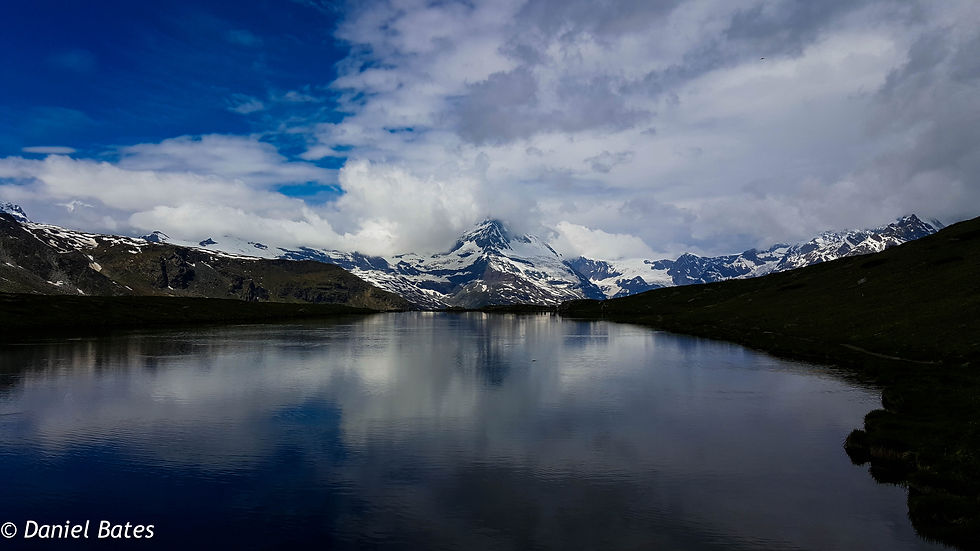
A quick introduction to the Five Lakes Trail. This path starts off at Blauherd and leads past the lakes of Stellisee, Grindjisee, Grünsee, Moosjisee and Leisee. Each lake is very different as they are different shapes, have different water colour, size of course and character. When walking to each lake I could see why this trail path is number one of the hiking trails in Zermatt and which most visitors want to do as it is easy and family friendly.
The Steillisee is probably the most beautiful lake out of the five and is great to walk around. Once walking past the whole lake, at the other end there are a couple of benches to sit on and take in the view of the Matterhorn as well as seeing its reflection on the water's surface. Unfortunately I didn’t see the reflection as there was a little bit of cloud and the wind was picking up but I still had a great time chilling out next to the lake, eating fruit and gazing in its glory.
The walk to the second lake was the quickest as it’s mostly down hill. The tall mountain peaks overshadowed me and the clouds were quickly going away, drifting over to Italy where they belong (I am joking of course, Italy is a great country). The hike was great but very dusty. Every time my foot took a step forward, I was kicking dust up in the air. Also on this part of the hike the trees have gone so I needed to apply a lot more sun tan lotion to my skin.
At the second lake, the Grindjisee there is also a great opportunity to see the reflection of the Matterhorn but this did not happen. However I got to see some rare flowers on the shores of the lake which I had never seen in my life. This is also a great place to sit on a huge rock on the eastern side of the lake and take in the surrounding noises of nature and have some nibbles which I took for the trip. However walking around this lake requires some good footwear as it did rain a few days before I came up here and was very boggy.

The third lake I came across was the Grünsee and this lake on a good day can also have amazing views of the Matterhorn. However on the hike I did that day the clouds were about and the place seemed dim and grim. I was fortunate enough to have plenty of space around me as this lake is quite open and lots of huge rocks to sit on and take in the views and have a snack (or if you are that bored, take in the fishes and see why all one hundred small fish are attacking one fish as we saw!). The lake looks out over a more rugged landscape where Swiss stone pine trees manage to grow among the sand and scree.
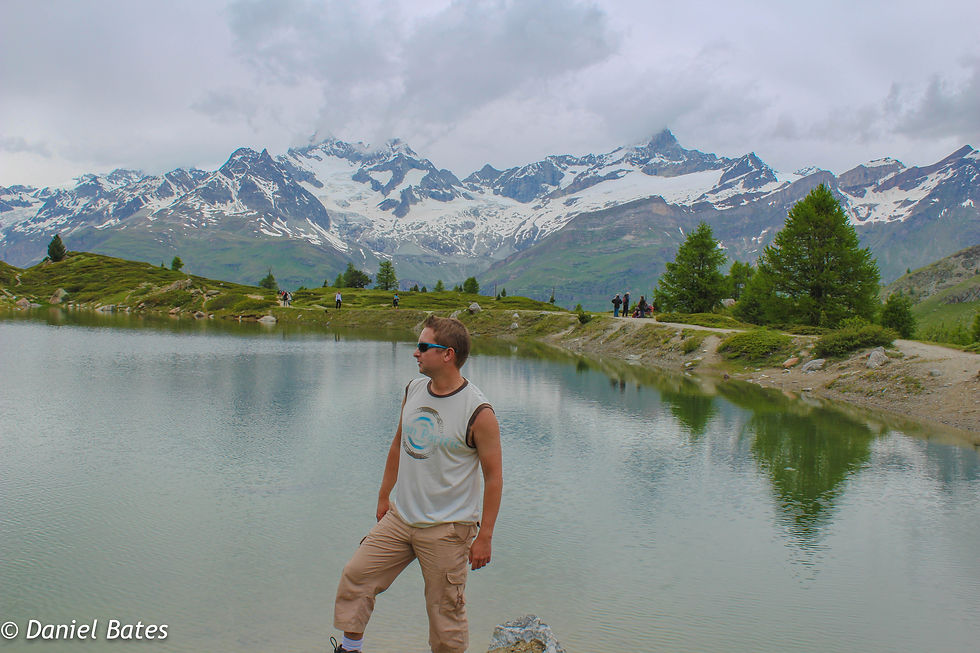
The walk from the third to the fourth lake was quick and simple as it was the steepest downhill section to tackle. Luckily the paths weren’t too rocky or tricky so I was there in no time. However the lake which looks very clean and spectacular from above with its milky blue watery surface is in fact also used as a reservoir and the water it contains powers electricity in Zermatt down below. The lake is known as Moosjisee but I didn’t see any Moose around here, however there are great views of the surrounding mountains and is a great place to chill out.

The hike from the fourth to the fifth lake can be a toughie if anyone takes the wrong route. The easy route which is signposted (lookout for the yellow signs with 5-Seenweg written on them) is longer but a little bit easier whilst walking on thick dusty road trails but I decided to take the shorter but tougher route which took me uphill towards Leisee. At this moment of time it felt like the scene from the ‘sound of the music’ with the green grass surrounded by snow-peaked mountains and the sun rays shining on me.

The Leisee is located near the Sunnegga train station and is a great lake for children to play nearby (there is a huge play park here) and is an ideal lake to swim in (I've been told but on this day I saw nobody tempting fate). Here there is also another great chance to see the Matterhorn reflection on the lake surface but not much luck today.
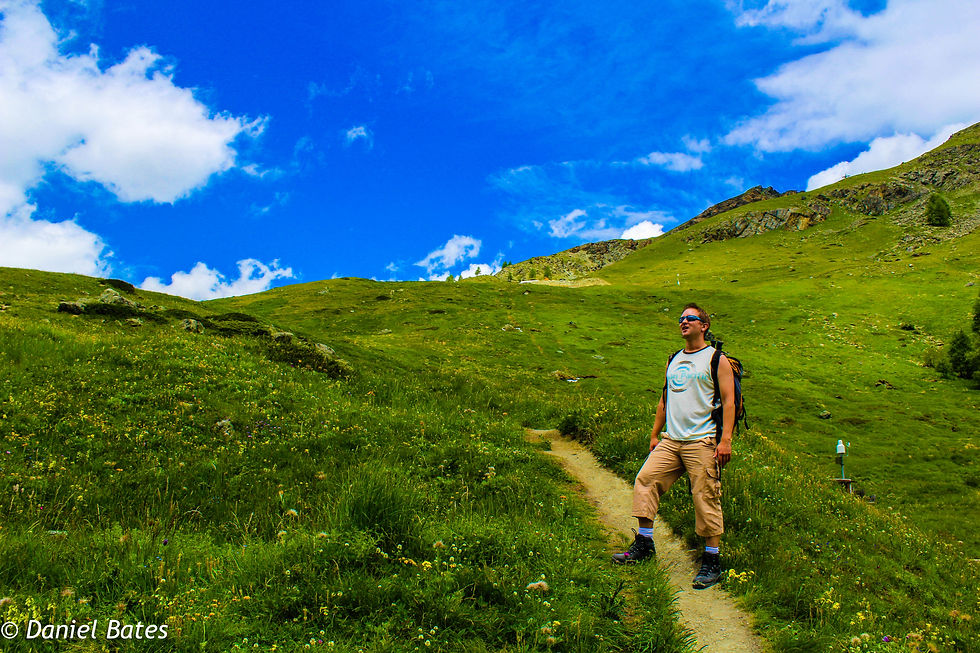
The best thing about doing this hike is at the finish. After walking about three hours going up and down dusty trails and of a short time a hike through a forested area, at Sunnegga there is a nice buffet restaurant to chill out at. I went for the traditional Swiss Rosti meals (potato meal with fried egg) plus a large beer. Sitting outside the outdoor terrace it was a perfect location in the sunshine to eat a traditional Swiss meal and get light headed before taking the train back down.
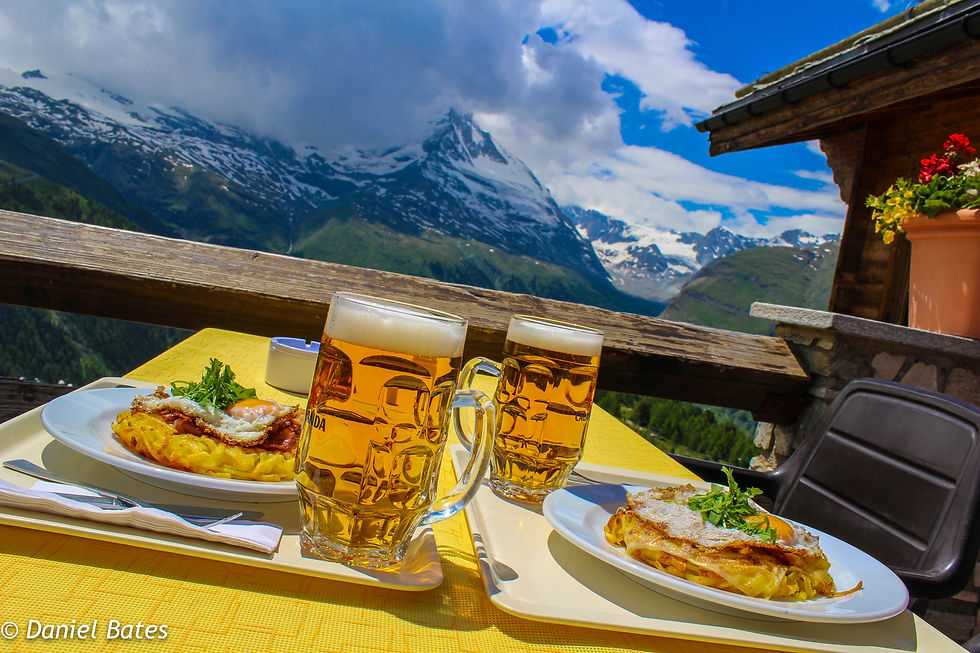
Overall, this was a very nice easy hike to do and can be done with anyone. A lot of people say the route I took can be done in 2h30 but I took about 3h45 including breaks, photographic opportunities and toilet breaks (shouldn’t have said that as there are no official toilet stops en route). Then with the food top at the end I spent about five hours enjoying the beautiful Swiss alpine scenery. This is an ideal short-hike for anyone visiting the area and is not that hard.
Top bits of advice about hiking in the Swiss Alps:
Plan each hike carefully and look at the weather details and what season you are in. Do not hike here if there is six feet of snow everywhere and make sure you have the right fitness level to do the hike. The Five Lakes Trail can be done by anyone above the age of six as its short in mileage and not much ascent as its mostly flat and a lot of descent involved.
The weather conditions can change very quickly in the mountains. Make sure you have the appropriate clothing and if on longer hikes, make sure you have adequate supplies of food and water.
Avoid going alone if you are not an experienced hiker and if you can, inform others of the planned route.
Do not leave the marked routes, do not venture onto glaciers.
Be considerate to other walkers and to animals and plants.
Take note of the warning signs. Do not disobey them. They are there for a reason.
Overall
Zermatt, despite being touristy at times, is still an amazing place to visit and check out. There are a variety of accommodation places (but to be honest not many options for the budget traveler), eating places and of course a few things to do and see. For me it is one of my favourite places for hiking (after the Jungfrau region of course) and there are certainly plenty of routes to take from here.
Thingking of going elsewhere in Switzerland. Let me recommend you:
Information
How to get to Zermatt: As mentioned earlier on in this post, no cars or buses are allowed in the resort so its more than likely visitors will be arriving by train. The railway line goes from Visp-Brig and through the valley passing St Niklaus, Randa and Tasch before making the long climb to Zermatt. If visitors have a car, they can drive through the valley as far as Tasch then must park the vehicle in the huge car park in the station before taking the train to Zermatt. To get to Visp or Brig by train, it is easy to do so and trains come far afield such as Chur, Bern, Thun, Zurich, Geneva, Lausanne and Sion. The nearest airports are Geneva and Zurich.
Accommodation: There are a lot of accommodation options and a lot of websites which can do some great deals. My first point of call is always Booking.com and can offer a range of hostels, hotels, campsites, apartments, guesthouses, bed and breakfasts and they can also be booked up on my website (just go to the right hand side of the screen). After that I always have a look through AirBnb for great deals on apartments and other lodgings especially when traveling as a family.
Currency: Switzerland uses the Swiss Franc. Currency can be exchanged at the airports and train stations (for a huge fee) so I would recommend either going to a currency exchange place downtown, to a bank (if they have good rates) or if you got a good bank account with fantastic exchange rates, then use an ATM machine (may incur a small fee but I always do this option as I got good bank accounts).
Language: It’s Switzerland, so that means the locals speak Swiss! Wrong! Switzerland has four official languages, German, French, Italian, and Romansh. Zermatt is in the region which is German-speaking. However, a lot of people learn American-English for business dealings, so speaking in American or English is not a problem for the locals.
Watch out for: keep an eye on your bank account, Switzerland is one of the most expensive countries in the world. Dress and take clothes for all weathers. Remember to drink wine with a fondue!
Flying into this area? Then I would recommend using Skyscanner to find flights as that is my first point of call. Then if necessary use the airlines directly to find a good deal. I sometimes use Momondo as well to compare prices before booking.
Travel insurance: Need insurance? Safety Wing offers coverage for a lot of adventure activities as well as emergency medical, lost luggage, trip cancellation and so forth. I never travel without travel insurance. I highly recommend them for those who need travel insurance.
Need a visa for Switzerland? Always check if you need a visa when coming to Switzerland, especially for those who come from outside Europe.
If you would like to share my blog post via Pinterest, please share the pin below.
Please note that while I was not working with any company based in Zermatt, my review and experiences written about in this post are 100% genuine. I value my readers too much to lie to you. My blog would be nothing without you and your continued support! There maybe some links above which are affiliate and are at no additional cost to you. If my readers use them, I earn a commission to buy their products and remember, I only mentioned products and companies I use. The income from this keeps this website going. Thank you.





































































































Comments